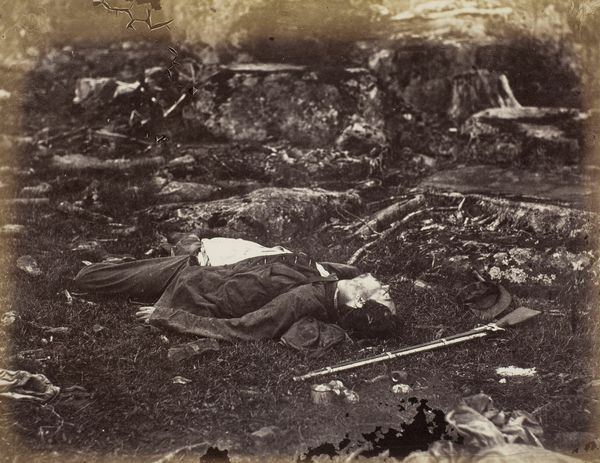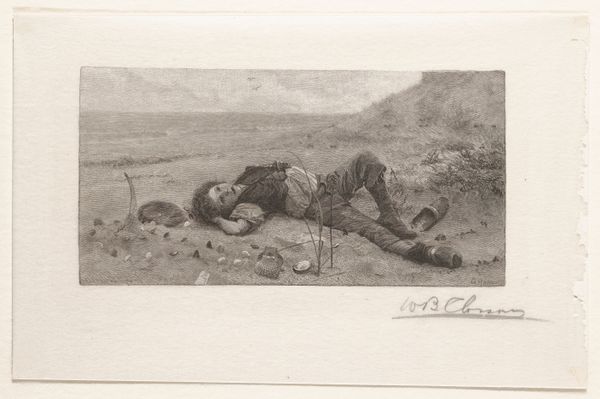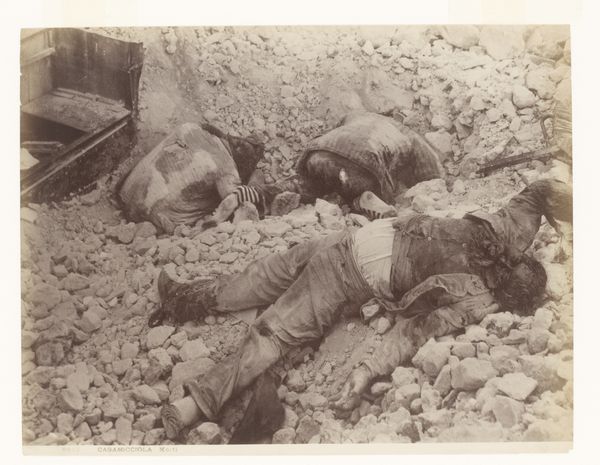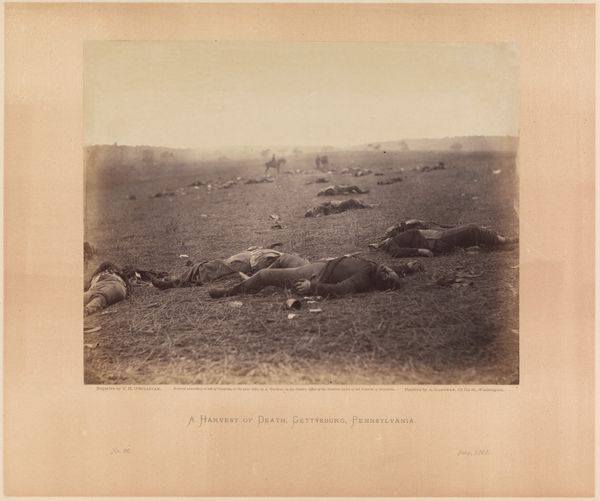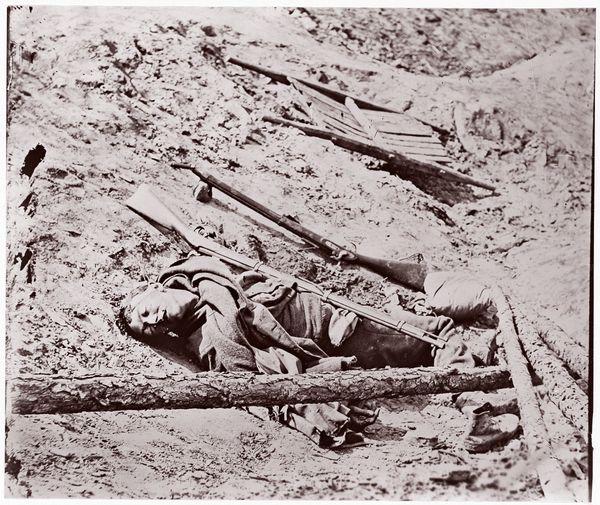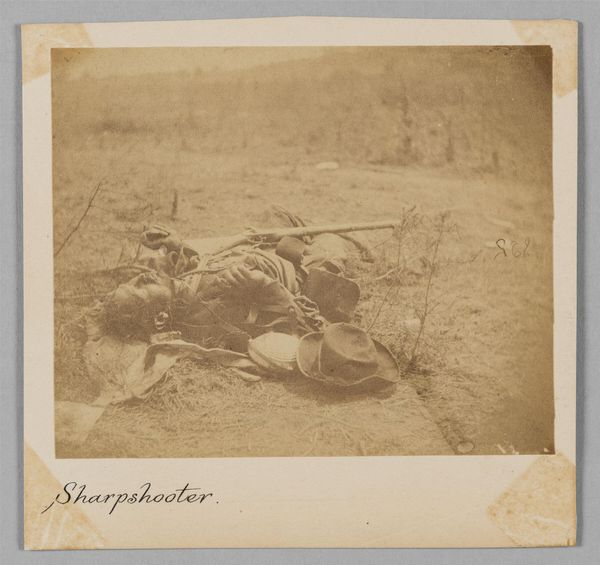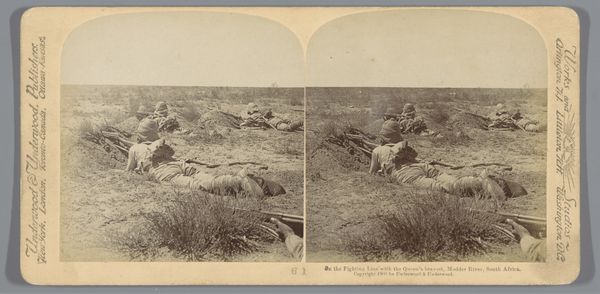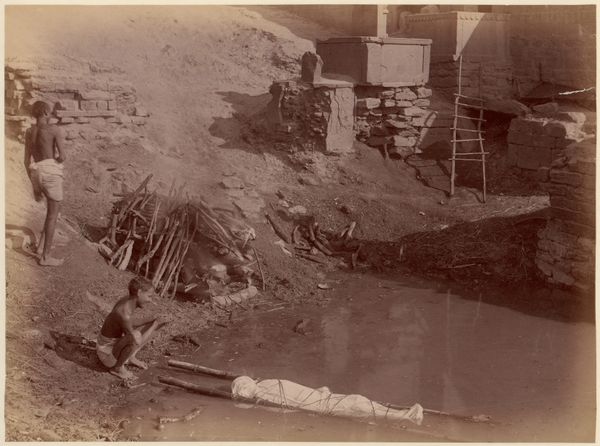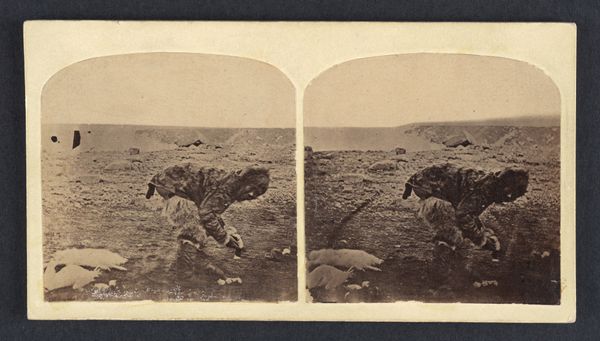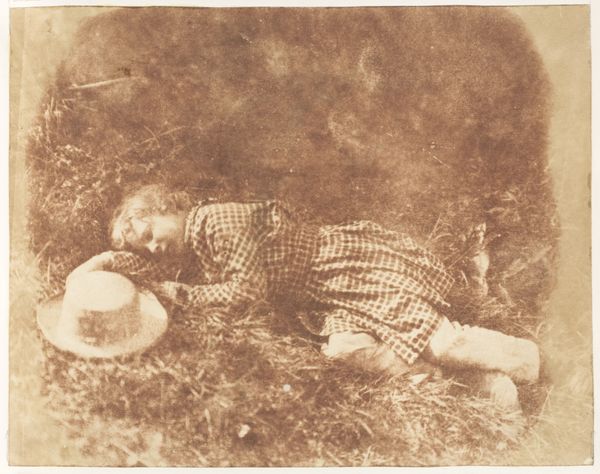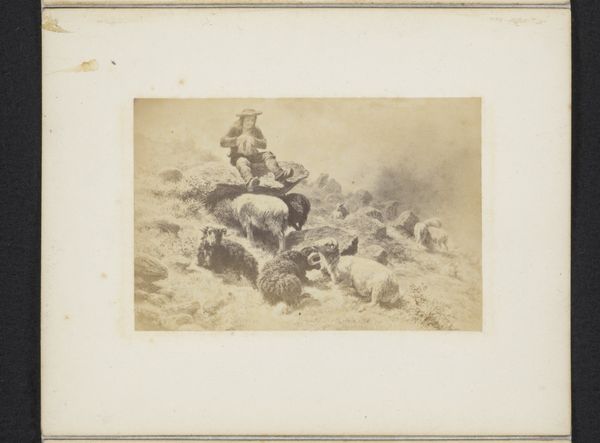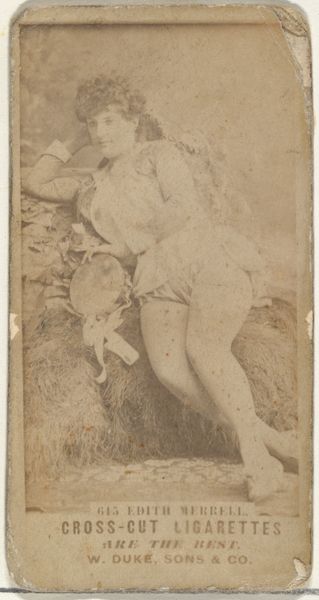![Confederate Soldier [on the Battlefield at Antietam] by Alexander Gardner](/_next/image?url=https%3A%2F%2Fd2w8kbdekdi1gv.cloudfront.net%2FeyJidWNrZXQiOiAiYXJ0ZXJhLWltYWdlcy1idWNrZXQiLCAia2V5IjogImFydHdvcmtzL2EzOGE0YjAzLWQzMWUtNDI5Yy1hNDVlLTk4ZWI4MjlhZjE2ZS9hMzhhNGIwMy1kMzFlLTQyOWMtYTQ1ZS05OGViODI5YWYxNmVfZnVsbC5qcGciLCAiZWRpdHMiOiB7InJlc2l6ZSI6IHsid2lkdGgiOiAxOTIwLCAiaGVpZ2h0IjogMTkyMCwgImZpdCI6ICJpbnNpZGUifX19&w=3840&q=75)
Confederate Soldier [on the Battlefield at Antietam] 1862
0:00
0:00
photography, gelatin-silver-print
#
portrait
#
death
#
war
#
landscape
#
photography
#
soldier
#
gelatin-silver-print
#
history-painting
#
realism
Dimensions: Image: 6.1 x 9.8 cm (2 3/8 x 3 7/8 in.)
Copyright: Public Domain
Editor: Okay, next up is "Confederate Soldier [on the Battlefield at Antietam]", a gelatin-silver print by Alexander Gardner from 1862. It's a stark depiction of a fallen soldier. It evokes such a profound sense of loss. What are your initial thoughts when you look at this photograph? Curator: Gardner's photograph operates on several levels. On one hand, it's a stark document of a specific historical event: the Battle of Antietam, one of the bloodiest single-day engagements of the Civil War. More broadly, however, it signifies a critical shift in how war was perceived and represented. Photography brought the brutal reality of conflict directly to the public, challenging idealized notions of heroism and valor. Editor: So it's challenging pre-conceived ideas? Curator: Precisely. Before photography, war was primarily depicted through paintings and drawings, often glorifying battle and focusing on triumphant leaders. Gardner's photograph, with its unflinching portrayal of death on the battlefield, stripped away that romanticism. It was exhibited in Mathew Brady's New York gallery soon after the battle, shocking viewers with its immediacy. Editor: That’s incredibly powerful. How did the public respond to such a stark image? Curator: With a mix of fascination and revulsion. While the photograph generated considerable public interest, it also provoked discomfort. It forced people to confront the human cost of war in a way they hadn't before, contributing to growing anti-war sentiment and changing attitudes about the conflict's purpose. Editor: It makes you think about the role of art in shaping public opinion and social change. Curator: Absolutely. Gardner's image highlights the power of photography to disrupt established narratives, influence social consciousness, and promote dialogue. And, perhaps more importantly, it immortalizes a soldier who would otherwise have been another statistic in this bloody and protracted battle. Editor: That is definitely food for thought. This conversation has deepened my understanding of photography’s early power. Curator: Mine too. It's a poignant reminder of art's enduring ability to bear witness and challenge prevailing attitudes.
Comments
No comments
Be the first to comment and join the conversation on the ultimate creative platform.
